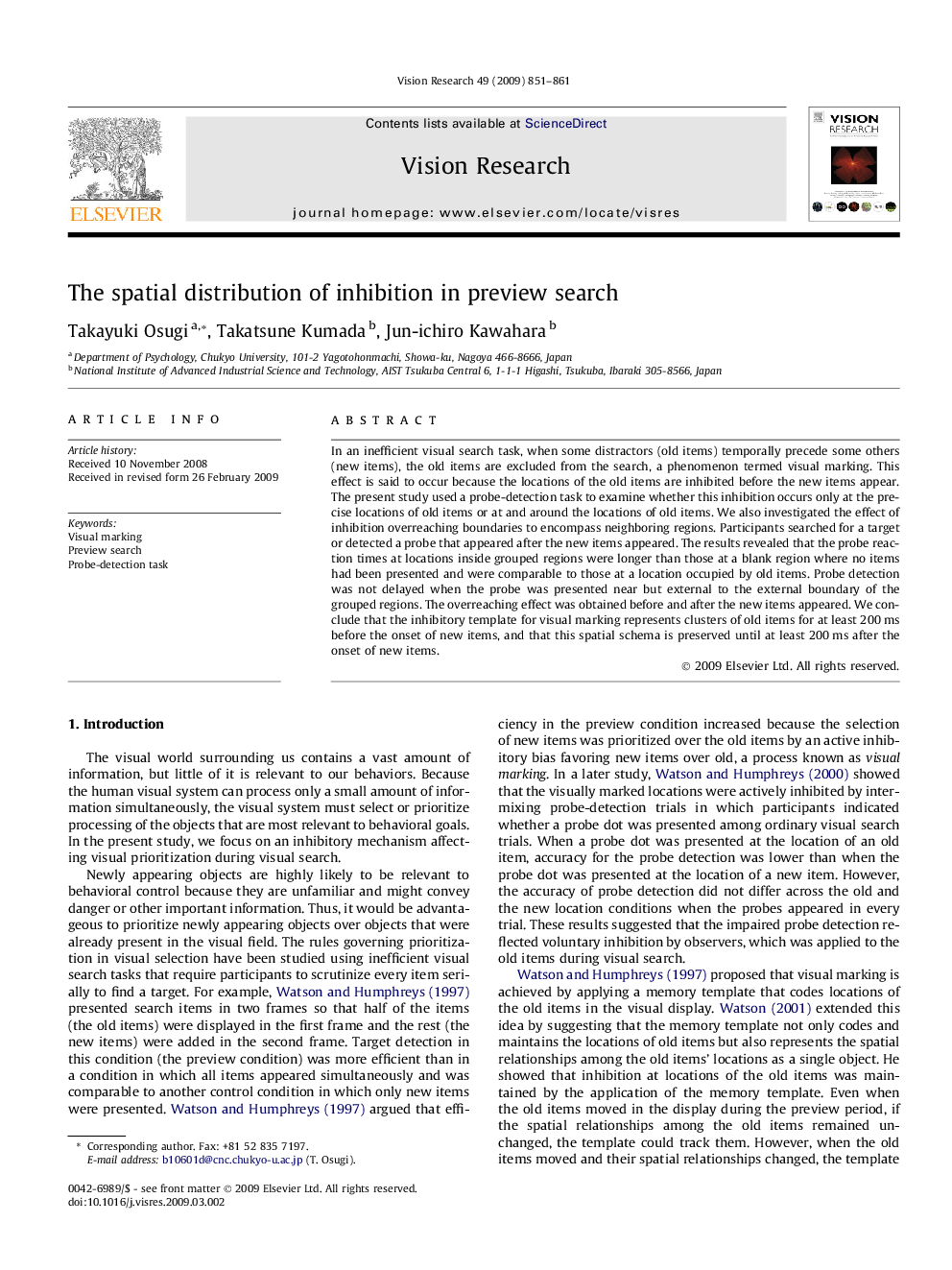| Article ID | Journal | Published Year | Pages | File Type |
|---|---|---|---|---|
| 4034797 | Vision Research | 2009 | 11 Pages |
In an inefficient visual search task, when some distractors (old items) temporally precede some others (new items), the old items are excluded from the search, a phenomenon termed visual marking. This effect is said to occur because the locations of the old items are inhibited before the new items appear. The present study used a probe-detection task to examine whether this inhibition occurs only at the precise locations of old items or at and around the locations of old items. We also investigated the effect of inhibition overreaching boundaries to encompass neighboring regions. Participants searched for a target or detected a probe that appeared after the new items appeared. The results revealed that the probe reaction times at locations inside grouped regions were longer than those at a blank region where no items had been presented and were comparable to those at a location occupied by old items. Probe detection was not delayed when the probe was presented near but external to the external boundary of the grouped regions. The overreaching effect was obtained before and after the new items appeared. We conclude that the inhibitory template for visual marking represents clusters of old items for at least 200 ms before the onset of new items, and that this spatial schema is preserved until at least 200 ms after the onset of new items.
